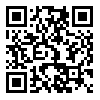BibTeX | RIS | EndNote | Medlars | ProCite | Reference Manager | RefWorks
Send citation to:
URL: http://ph.aui.ac.ir/article-1-463-en.html
2- science & culture university
3- art university of isfahan
The attitude and reaction of Safavid government as a central integrated government in the Islamic world towards art, culture and religions, especially Jews, can be studied and analyzed. The dominant atmosphere of Isfahan in 11th century (hijra) was so that the Jews of this city could produce their unique illustrated books by adapting the themes of literary masterpieces of Muslim Iranians and using as the model the techniques and traditions of book-decoration prevalent in the royal art workshops or private workshops in that period. Meanwhile, regarding the longstanding presence of Jews in Iran, some particular indices known as Judeo-Persian were created which represented their specific linguistic and expressive features and they can be observed and explored in their particular literature and texts as well as in the field of book-decoration. Using a descriptive-analytic method, this study aims at shedding light on the activities of Jews, particularly their art of book-decoration, in two classes of religious and national texts by providing a close reading of nine paintings from the library of Jewish theology school of America. The study of these texts and paintings portrays a group of people who not only tries to keep their language and basic concepts alive but also keep their connection with other people and religions of this country by selecting common visual manners and conventions of Iran and emphasize their shared concepts as an Iranian.
| Rights and permissions | |
 |
This work is licensed under a Creative Commons Attribution-NonCommercial 4.0 International License. |





